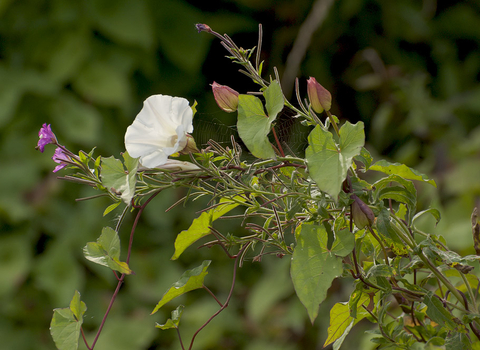
©Northeast Wildlife
Hedge bindweed
A climbing plant of woodlands, hedgerows, riverbanks and gardens, Hedge bindweed can become a pest in some places. It has large, trumpet-shaped, white flowers and arrow-shaped leaves.
Enw gwyddonol
Calystegia sepiumPryd i'w gweld
June to SeptemberSpecies information
Category
Ystadegau
Height: up to 3mCommon.
